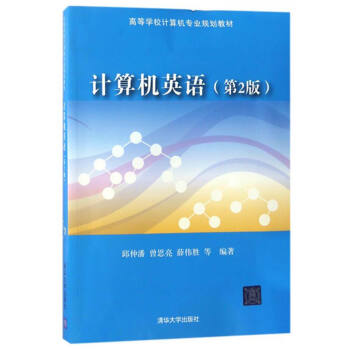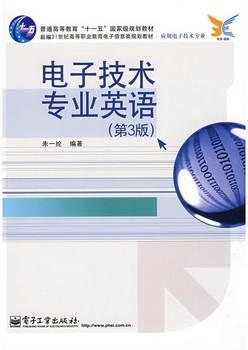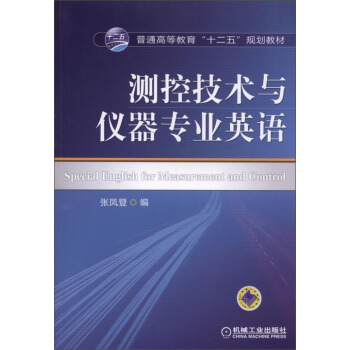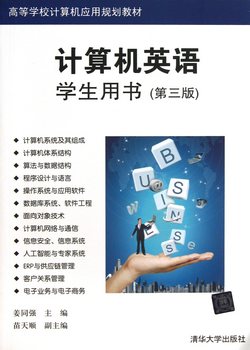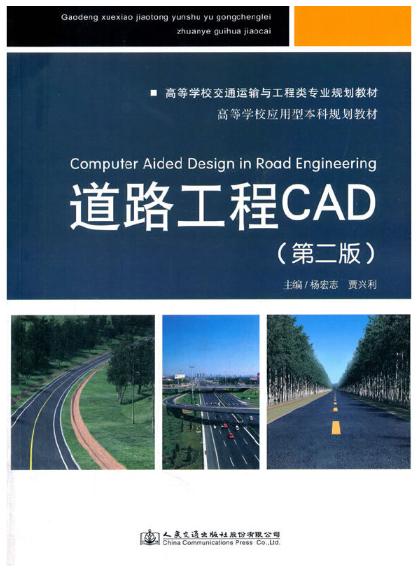计算机英语(第2版) / 高等学校计算机专业规划教材
定价:¥49.00
作者: 邱仲潘,曾思亮等
出版时间:2017-05
出版社:清华大学出版社
- 清华大学出版社
- 9787302462552
- 2-1
- 22351
- 16开
- 2017-05
- TP3
- 英语
内容简介
《计算机英语(第2版)/高等学校计算机专业规划教材》主要介绍计算机硬件、软件、系统、网络、应用程序等相关知识,共分为20章,新版增加了智能手机、无线Wi-Fi、机器学习等领域新的科技文章,增加了时代感和趣味性。
《计算机英语(第2版)/高等学校计算机专业规划教材》由一线教师编写,这些教师了解学生的知识水平、接受能力和需求点,而且翻译过大量计算机图书,有丰富的翻译经验。《计算机英语(第2版)/高等学校计算机专业规划教材》强调阅读理解,对一些难句进行了深入的解析。
《计算机英语(第2版)/高等学校计算机专业规划教材》可作为高等院校“计算机英语”课程的教材或教学参考书,也可供有一定英语基础的广大计算机用户学习计算机英语时使用。
《计算机英语(第2版)/高等学校计算机专业规划教材》由一线教师编写,这些教师了解学生的知识水平、接受能力和需求点,而且翻译过大量计算机图书,有丰富的翻译经验。《计算机英语(第2版)/高等学校计算机专业规划教材》强调阅读理解,对一些难句进行了深入的解析。
《计算机英语(第2版)/高等学校计算机专业规划教材》可作为高等院校“计算机英语”课程的教材或教学参考书,也可供有一定英语基础的广大计算机用户学习计算机英语时使用。
目录
Chapter 1 PC Basic
1.1 Storage
1.2 Outer Hardware
1.3 Smartphone, Tablet and Laptop
1.4 Exercise 1
1.5 Further Reading: Flash Memory
1.5.1 The Basics
1.5.2 Removable Flash Memory Cards
1.5.3 SmartMedia
1.5.4 CompactFlash
Chapter 2 How Computer Monitors Work
2.1 The Basics
2.1.1 Display Technology Background
2.1.2 Display Technologies: VGA
2.1.3 Display Technology: DVI
2.1.4 Viewable Area
2.1.5 Maximum Resolution and Dot Pitch
2.1.6 Dot Pitch
2.1.7 Refresh Rate
2.1.8 Color Depth
2.1.9 Power Consumption
2.1.10 Monitor Trends: Flat Panels
2.2 Exercise 2
2.3 Further Reading: Liquid Crystal Display
2.3.1 Brief History
2.3.2 Transmissive and Reflective Displays
2.3.3 Color Displays
2.3.4 Passive-matrix and Active-matrix
2.3.5 Quality Control
2.3.6 Zero-power Displays
2.3.7 Drawbacks
Chapter 3 How Cell Phones Work
3.1 Cell-phone Frequencies
3.2 Cell-phone Channels
3.3 Analog Cell Phones
3.4 Along Comes Digital
3.5 Inside a Digital Cell Phone
3.6 Exercise 3
3.7 Further Reading: Cell Phone
3.7.1 History
3.7.2 Handsets
Chapter 4 Digital Camera Basics
4.1 How does Digital Camera Work
4.2 CCD and CMOS: Filmless Cameras
4.3 Digital Camera Resolution
4.4 Capturing Color
4.5 Digital Photography Basics
4.6 Megapixel Ratings
4.7 Digital Camera Settings and Modes
4.8 Shutter Speed
4.9 Exercise 4
4.10 Further Reading: How to Take Good Photos
4.10.1 Digital Camera Problems
4.10.2 Image Editing Software
Chapter 5 How Bits and Bytes Work
5.1 Decimal Numbers
5.2 Bits
5.3 Bytes
5.4 Bytes: ASCII
5.5 Standard ASCII Character Set
5.6 Lots of Bytes
5.7 Binary Math
5.8 Quick Recap
5.9 Exercise 5
……
Chapter 6 Microprocessors
Chapter 7 Application Software
Chapter 8 Compiler
Chapter 9 How Java Works
Chapter 10 Database & C++
Chapter 11 Artificial Intelligence
Chapter 12 Machine Learnin
Chapter 13 How DSL Work
Chapter 14 Internet Infrastructure
……
附录A 部分参考译文
1.1 Storage
1.2 Outer Hardware
1.3 Smartphone, Tablet and Laptop
1.4 Exercise 1
1.5 Further Reading: Flash Memory
1.5.1 The Basics
1.5.2 Removable Flash Memory Cards
1.5.3 SmartMedia
1.5.4 CompactFlash
Chapter 2 How Computer Monitors Work
2.1 The Basics
2.1.1 Display Technology Background
2.1.2 Display Technologies: VGA
2.1.3 Display Technology: DVI
2.1.4 Viewable Area
2.1.5 Maximum Resolution and Dot Pitch
2.1.6 Dot Pitch
2.1.7 Refresh Rate
2.1.8 Color Depth
2.1.9 Power Consumption
2.1.10 Monitor Trends: Flat Panels
2.2 Exercise 2
2.3 Further Reading: Liquid Crystal Display
2.3.1 Brief History
2.3.2 Transmissive and Reflective Displays
2.3.3 Color Displays
2.3.4 Passive-matrix and Active-matrix
2.3.5 Quality Control
2.3.6 Zero-power Displays
2.3.7 Drawbacks
Chapter 3 How Cell Phones Work
3.1 Cell-phone Frequencies
3.2 Cell-phone Channels
3.3 Analog Cell Phones
3.4 Along Comes Digital
3.5 Inside a Digital Cell Phone
3.6 Exercise 3
3.7 Further Reading: Cell Phone
3.7.1 History
3.7.2 Handsets
Chapter 4 Digital Camera Basics
4.1 How does Digital Camera Work
4.2 CCD and CMOS: Filmless Cameras
4.3 Digital Camera Resolution
4.4 Capturing Color
4.5 Digital Photography Basics
4.6 Megapixel Ratings
4.7 Digital Camera Settings and Modes
4.8 Shutter Speed
4.9 Exercise 4
4.10 Further Reading: How to Take Good Photos
4.10.1 Digital Camera Problems
4.10.2 Image Editing Software
Chapter 5 How Bits and Bytes Work
5.1 Decimal Numbers
5.2 Bits
5.3 Bytes
5.4 Bytes: ASCII
5.5 Standard ASCII Character Set
5.6 Lots of Bytes
5.7 Binary Math
5.8 Quick Recap
5.9 Exercise 5
……
Chapter 6 Microprocessors
Chapter 7 Application Software
Chapter 8 Compiler
Chapter 9 How Java Works
Chapter 10 Database & C++
Chapter 11 Artificial Intelligence
Chapter 12 Machine Learnin
Chapter 13 How DSL Work
Chapter 14 Internet Infrastructure
……
附录A 部分参考译文

